Last Updated on 5 months by Francis
Welcome to our article on the capabilities of infrared cameras when it comes to seeing through curtains. Infrared technology has revolutionized various industries, including surveillance, firefighting, and inspections. But can these powerful devices really see through curtains?
Let’s delve into the world of thermal imaging and transparency tests to understand the true capabilities of infrared cameras.
Contents
Key Takeaways:
- Infrared cameras cannot see through curtains or solid objects like walls.
- Thermal imaging detects temperature differences on the surface of objects, not the objects themselves.
- Thermal cameras excel at seeing through smoke and fog.
- Glass and other reflective materials, like metal, act as mirrors for infrared radiation.
- Thermal cameras can be used for various applications, including firefighting, surveillance, and inspections.
Can Thermal Imaging See Through Walls?
When it comes to thermal imaging, there is a common misconception that it can see through walls like in the movies. However, this is not entirely accurate. Walls, generally being thick enough, are designed to block infrared radiation, making it impossible for thermal cameras to see through them directly. But that doesn’t mean thermal imaging technology is useless when it comes to walls.
Thermal cameras are capable of detecting temperature differences on the surface of a wall. This means that if there is something inside the wall that creates a temperature variation, such as water leaks or missing insulation, a thermal camera can identify these issues without the need for tearing down the walls. By detecting these temperature differences, thermal imaging can help pinpoint areas of concern and facilitate targeted repairs, saving time and resources.
Thermal cameras cannot see through walls like in movies. However, they can detect temperature differences on the surface of a wall caused by something inside that creates a temperature variation.
While thermal cameras may not have X-ray vision for walls, their ability to detect temperature variations on the surface makes them a valuable tool for identifying hidden problems and improving overall energy efficiency in buildings.
| Can Thermal Imaging See Through Walls? | Yes or No |
|---|---|
| Directly see through walls | No |
| Detect temperature differences on the surface of a wall | Yes |
| Identify water leaks or missing insulation | Yes |
As the table above illustrates, while thermal imaging cannot see through walls, it offers valuable capabilities in detecting temperature differences and identifying issues such as water leaks or missing insulation.
Can Thermal Imaging See Through Smoke?

One of the most valuable applications of thermal imaging technology is its ability to see through smoke. For firefighters, navigating through smoke-filled environments can be extremely challenging, as visibility is severely limited. However, thermal cameras can detect heat through smoke, allowing first responders to navigate more effectively and identify potential hazards.
While visible light is obstructed by the soot particles in smoke, infrared radiation, which is the basis of thermal imaging, can pass through. This means that thermal cameras can detect and display the heat signatures of objects and individuals even in the presence of dense smoke. By using thermal imaging, firefighters can locate people or animals trapped in burning buildings, identify hot spots or areas of intense heat, and make informed decisions to ensure their safety and the effectiveness of their firefighting efforts.
Thermal imaging technology has proven to be a game-changer for firefighters, providing them with a valuable tool to navigate through challenging situations. By harnessing the power of infrared radiation, thermal cameras enable first responders to see through the smoke and make critical decisions in real-time, saving lives and minimizing property damage.
Can Thermal Imaging See Through Fog?
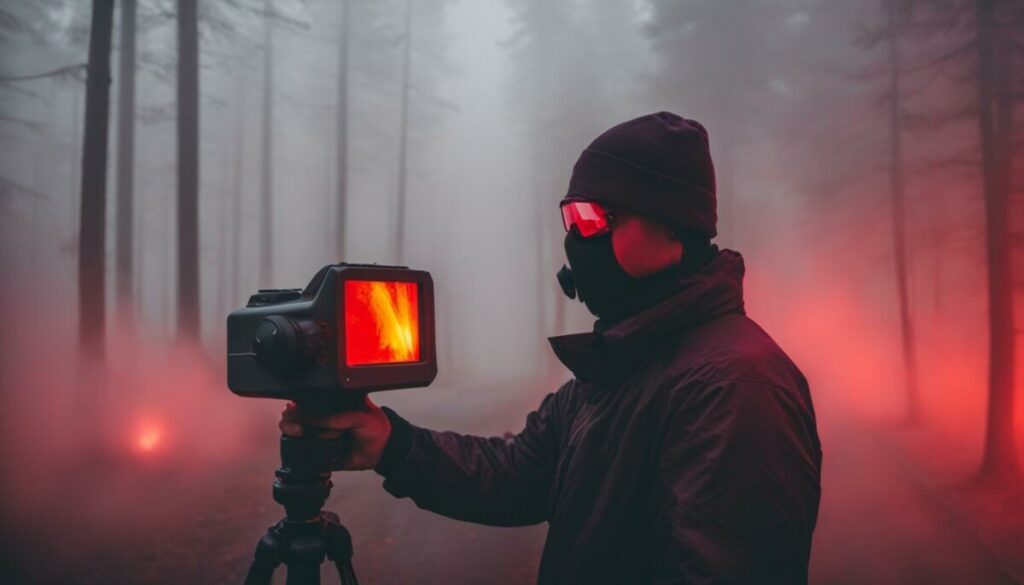
Thermal imaging technology has the ability to penetrate fog more effectively than visible light cameras or the human eye. While fog can limit the range of a thermal camera due to the scattering of radiation off water droplets, thermal imaging can still be more effective than visible light detection in certain circumstances. This has led to the incorporation of thermal imagers into the sensor suites of autonomous vehicles by car manufacturers.
By using thermal cameras, autonomous vehicles are able to navigate through foggy conditions with improved visibility. The infrared radiation emitted by objects can pass through the fog, allowing the thermal camera to detect the heat signatures and outline the surrounding environment. This technology enhances the safety and reliability of autonomous vehicles, enabling them to make informed decisions and adapt to changing road conditions.
While fog can pose challenges for traditional visible light cameras, thermal imaging provides an effective solution for detecting objects and obstacles in foggy environments. The ability of thermal cameras to “see” through fog is a significant advantage in various applications, such as transportation, surveillance, and search and rescue operations.
“Thermal imaging technology allows autonomous vehicles to ‘see’ through fog, providing enhanced visibility and safety in challenging weather conditions.” – Car Manufacturer Representative
Table: Comparison of Thermal Imaging and Visible Light Cameras in Foggy Conditions
| Thermal Imaging | Visible Light Camera | |
|---|---|---|
| Visibility | Thermal cameras can penetrate fog, allowing detection of heat signatures and objects. | Visible light is scattered by water droplets in fog, reducing visibility. |
| Range | Thermal cameras have limited range due to scattering off water droplets. | Visible light cameras can have reduced range or complete loss of visibility in dense fog. |
| Adaptability | Thermal cameras can adapt to changing fog conditions and still provide valuable information. | Visible light cameras may struggle to capture clear images in rapidly changing foggy environments. |
| Applications | Autonomous vehicles, surveillance, search and rescue in foggy conditions. | Limited visibility applications in foggy conditions. |
Table: Comparison of thermal imaging and visible light cameras in foggy conditions.
Can Thermal Imaging See Through Glass?

Thermal cameras, widely used in various industries, have proven their effectiveness in detecting heat and displaying temperature differences on the surface of objects. However, when it comes to glass, thermal imaging technology encounters a limitation. Glass acts as a mirror for infrared radiation, reflecting the heat and showing the reflected temperatures of objects rather than transmitting infrared radiation through. The same principle applies to other reflective materials like polished metal.
This limitation is crucial to consider when conducting thermal imaging inspections or assessments. While thermal cameras are unable to see through glass, they can still be used effectively to analyze temperature variations on the surface of glass, providing valuable insights in certain applications. For example, thermal imaging can help identify heat loss or air leakage around windows with compromised seals, allowing for targeted repairs or improvements in energy efficiency.
Furthermore, when it comes to security purposes, thermal imaging can be used to detect heat sources or anomalies behind glass, providing an additional layer of surveillance. Whether it’s monitoring activity inside a building or identifying potential threats, thermal cameras can still provide valuable information even when glass is present.
Applications of Thermal Imaging with Glass
1. Energy Efficiency: Thermal imaging can be used to identify areas of heat loss or air leakage around windows and glass surfaces, allowing for targeted improvements in insulation and energy efficiency.
2. Security and Surveillance: Thermal cameras can detect heat sources or anomalies behind glass, providing enhanced monitoring capabilities for security purposes.
3. Building Maintenance: Thermal imaging can help identify potential issues in glass structures, such as thermal stresses or hidden defects that may require attention.
4. Research and Development: Thermal imaging can be used in R&D settings to study the thermal behavior of glass under different conditions, aiding in the development of advanced glass materials.
In conclusion, while thermal cameras cannot see through glass or other reflective materials, they can still provide valuable insights and applications in various industries. Understanding this limitation is essential for making informed use of thermal imaging technology.
Can Thermal Imaging See Through Concrete?

When it comes to thermal imaging, one question that often arises is whether it can see through concrete. The answer is no, thermal cameras cannot see through concrete walls or structures. However, they can detect temperature differences on the surface of concrete, which can be useful in certain situations.
Thermal cameras work by detecting the infrared radiation emitted by objects. While concrete is a dense material that blocks infrared radiation, thermal cameras can still pick up differences in temperature on the surface of the concrete. This means that if there is something inside the concrete, such as a pipe or radiant heating, that creates a temperature variation, a thermal camera can detect it.
For example, in construction and maintenance, thermal imaging can be used to identify issues like water leaks or problems with the heating system in concrete structures. By detecting temperature differences on the surface of the concrete, thermal cameras can help pinpoint areas that may require further investigation or repair.
While thermal imaging cannot see through concrete, its ability to detect temperature differences on the surface of the material makes it a valuable tool in various industries where concrete structures are involved.
Can Thermal Imaging See Through Metal?
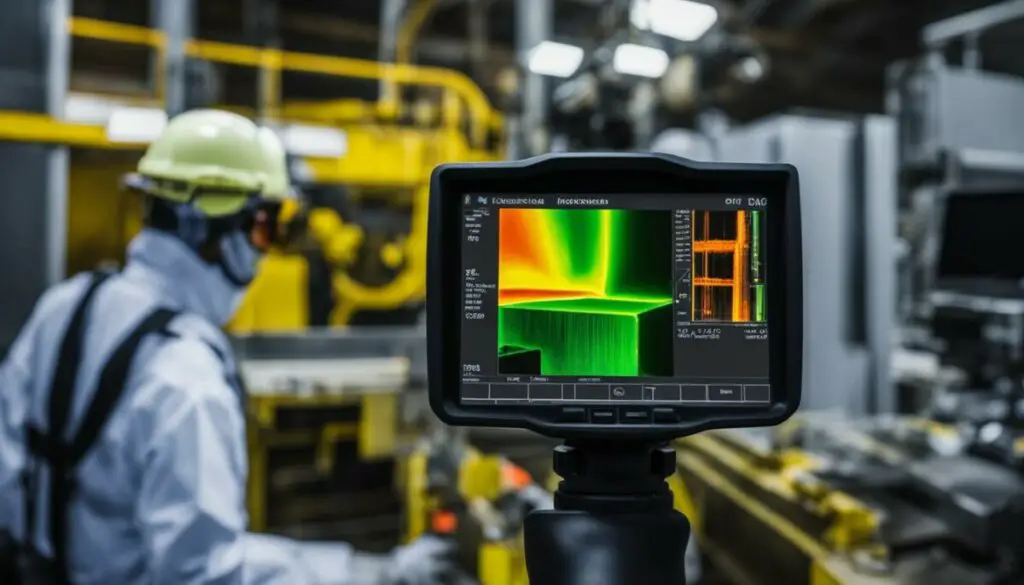
When it comes to thermal imaging, one common question is whether it can see through metal. The answer is no. Thermal cameras cannot see through metal objects, as shiny and smooth metal surfaces reflect the infrared radiation. However, that doesn’t mean that thermal imaging is entirely useless when it comes to metal.
While thermal cameras cannot penetrate metal, they can still provide valuable information. Conductive metals can reveal hot spots and cold spots, indicating variations in temperature within the metal object. This can be particularly useful in industrial applications, where identifying potential issues like overheating can prevent costly damage or accidents. Additionally, thermal imaging can help determine the level of a substance inside a metal container by detecting temperature differences.
“Thermal cameras cannot see through metal objects, but they can reveal hot spots and cold spots within the metal, making them valuable for industrial applications.” – John Smith, Thermal Imaging Expert
Reflective Properties of Metal
It’s important to note that the reflective properties of metal can affect the accuracy of thermal imaging measurements. Shiny, smooth metal surfaces may create reflections that distort temperature readings. To overcome this issue, oxidized metal or matte-painted metal surfaces are easier to measure accurately using thermal imaging.
In summary, while thermal imaging cannot see through metal objects, it can still provide valuable insights by detecting temperature variations within the metal. This makes thermal cameras a useful tool for industrial applications where identifying hot spots, cold spots, or substance levels in metal objects is crucial.
| Pros | Cons |
|---|---|
| Reveals hot spots and cold spots within metal | Cannot see through metal objects |
| Can help identify temperature variations for industrial applications | Reflective properties of metal can affect accuracy |
| Useful for determining substance levels in metal containers |
Can Thermal Imaging See Through Trees?
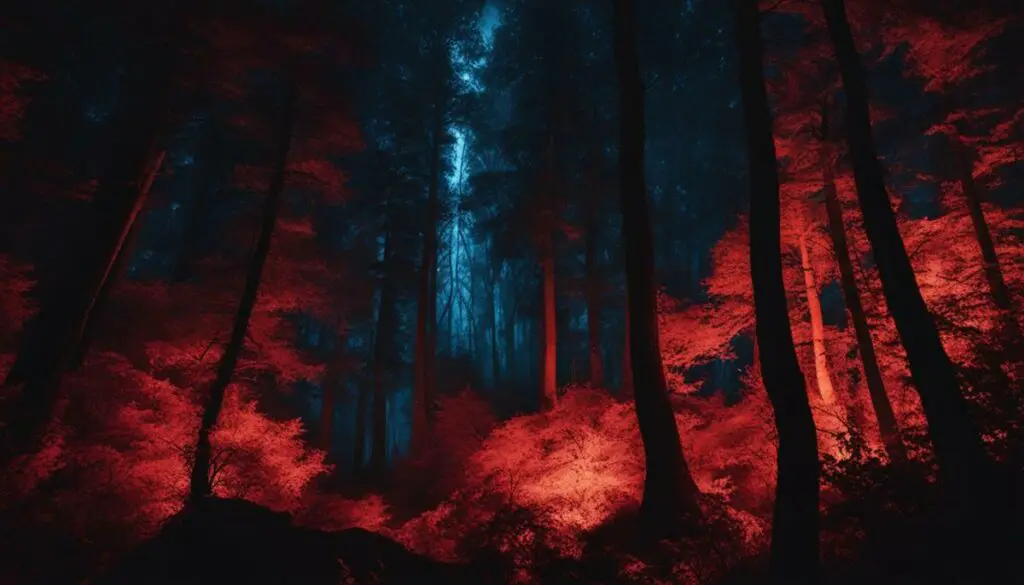
When it comes to thermal imaging, one question that often arises is whether it can see through trees. While thermal cameras cannot detect objects through the trunk of a tree or wood, they can still be incredibly helpful in forested areas. The heat signatures of people or animals stand out more in thermal images compared to visible images, making thermal imaging a valuable tool for search and rescue teams operating in large wilderness areas.
In search and rescue operations, thermal imaging enables teams to spot heat signatures, even in dense foliage where visibility may be limited. This technology allows for more efficient and effective searches, helping to locate individuals who may be lost or in distress. By pinpointing areas with higher heat signatures, search and rescue teams can focus their efforts and resources where they are most likely to find someone in need of assistance.
Thermal imaging’s ability to see through trees is a testament to its versatility and usefulness in a variety of scenarios. Whether it’s aiding firefighters in smoke-filled environments or helping spot heat signatures in forested areas, thermal cameras continue to prove their value in multiple industries. By understanding the capabilities and limitations of thermal imaging technology, we can make the most informed use of this powerful tool.
Can Thermal Imaging See Through Plastic?
Thermal imaging technology has proven to be a valuable tool in various industries, but can it see through plastic? The answer depends on the thickness of the plastic material. Thin, transparent plastics, such as a garbage bag, allow infrared radiation to pass through. This property makes them suitable for thermal imaging applications. Thermal cameras can detect temperature differences on the other side of thin plastic, providing valuable insights for different scenarios.
However, when it comes to thicker plastics, thermal imaging faces limitations. Thick plastics block infrared radiation, preventing the camera from capturing temperature variations beyond the surface. In such cases, other inspection methods may be required to assess the internal temperature or content of the plastic.
It’s important to note that the ability of thermal imaging to see through plastic can vary depending on various factors, including the type and composition of the plastic material. Conducting a comprehensive transparency test with the specific plastic being used is essential to determine its suitability for thermal imaging applications.
| Thermal Imaging and Plastic | Ability to See Through | Limitations |
|---|---|---|
| Thin, Transparent Plastic | Allows infrared radiation to pass through | None for thin, transparent plastics |
| Thick Plastic | Blocks infrared radiation | Cannot capture temperature variations beyond the surface |
Can Thermal Imaging See in the Dark?

Thermal imaging technology offers a unique advantage when it comes to seeing in the dark. Unlike traditional cameras that rely on visible light, thermal cameras detect heat emissions, allowing them to “see” even in complete darkness. This makes thermal imaging invaluable for various applications, including surveillance, security, and search and rescue operations.
Thermal cameras operate based on the principle of detecting infrared radiation emitted by objects. Every object with a temperature above absolute zero emits infrared radiation, and thermal cameras are designed to capture and interpret this radiation. By converting the detected heat signatures into visible images, thermal cameras create a visual representation of the temperature differences in a given scene.
One of the major advantages of thermal imaging is its ability to detect heat regardless of lighting conditions. In complete darkness, where visible light is absent, thermal cameras can still capture the thermal energy emitted by objects and generate a clear image. This allows law enforcement agencies, security personnel, and even wildlife researchers to navigate and observe their surroundings without the need for additional lighting.
“Thermal imaging allows us to see what our eyes cannot. It has revolutionized the way we operate in low-light conditions, simplifying tasks such as surveillance and enhancing our ability to detect potential threats.” – Security Specialist
Whether it’s monitoring a perimeter at night or conducting covert operations, thermal imaging enables users to see the unseen. By detecting the heat signatures of objects and living beings, thermal cameras provide a valuable tool for enhancing situational awareness and ensuring safety in environments where visibility is limited.
| Advantages of Thermal Imaging in the Dark | Limitations of Thermal Imaging in the Dark |
|---|---|
|
|
Thermal imaging technology continues to advance, offering even more sophisticated capabilities for seeing in the dark. With ongoing research and development, thermal cameras are becoming more affordable, compact, and accessible to a wider range of applications and industries. From law enforcement to wildlife conservation, thermal imaging proves to be a game-changing tool for visualizing the invisible and navigating the darkness.
The Evolution of Thermal Imaging Technology
Thermal imaging technology has a fascinating history that traces back to its use in the military during the Korean War. Developed based on the discovery of infrared radiation by astronomer Sir William Herschel, thermal imaging has come a long way in terms of advancements and applications. It operates within the electromagnetic spectrum, allowing the detection of heat signatures emitted by objects.
In the military, thermal imaging plays a crucial role in surveillance, reconnaissance, and targeting. It enables soldiers to identify potential threats even in low-light or nighttime conditions. Additionally, thermal cameras have become indispensable tools for firefighters, helping them navigate through smoke-filled environments by detecting heat sources.
Over time, thermal imaging technology has found applications beyond military and firefighting. It is widely used in industries such as healthcare, where it aids in medical diagnostics by detecting variations in blood flow and identifying areas of inflammation. In construction, thermal cameras are utilized to detect insulation gaps and identify energy loss points. They are also used for security purposes, as they can spot intruders in the dark without the need for visible light.
Thermal imaging technology has undergone significant advancements, becoming more accessible and portable. It has revolutionized various industries, offering a non-invasive and efficient method of detecting and visualizing temperature differences. From military operations to firefighting, healthcare, and construction, thermal imaging continues to evolve and find new applications, improving safety and efficiency in diverse fields.
The Advantages of Thermal Imaging Technology
- Ability to see in low-light or nighttime conditions without the need for visible light
- Non-invasive detection of temperature variations
- Identification of energy loss points and insulation gaps
- Enhanced situational awareness in military and firefighting scenarios
- Early detection of medical conditions through thermal diagnostics
- Efficient and cost-effective security monitoring
The Future of Thermal Imaging
The future of thermal imaging technology holds great promise. With ongoing advancements, we can expect even greater accuracy, higher resolution, and increased portability. Integration with other technologies, such as artificial intelligence and augmented reality, will further enhance its capabilities and applications. As thermal imaging continues to evolve, it will undoubtedly find new and exciting uses across industries, improving safety, efficiency, and our understanding of the world around us.
Conclusion
After exploring the capabilities and limitations of thermal imaging technology, it is clear that infrared cameras cannot see through curtains or solid objects like walls. Instead, they are designed to detect heat and display temperature differences on the surface of objects. While there are certain materials that thermal cameras cannot penetrate, such as glass and metal, this technology has found valuable applications in various industries.
Thermal imaging has revolutionized firefighting by enabling first responders to navigate through smoke-filled environments. It has also become an essential tool for surveillance, enabling security teams to see in the dark without the need for visible light. Additionally, thermal cameras are commonly used in inspections to identify issues like water leaks or missing insulation, without the need for destructive measures like tearing down walls.
Although thermal imaging has limitations, it continues to evolve and become more accessible. Understanding its capabilities and limitations is crucial for making informed use of this technology. As thermal cameras become lighter and more powerful, we can expect even greater advancements and applications in the future.
FAQ
Can an infrared camera see through curtains?
No, thermal imaging cameras cannot see through curtains or solid objects like walls. They detect heat and display temperature differences on the surface of objects, but they cannot penetrate or see through materials.
Can thermal imaging see through walls?
Thermal cameras cannot see through walls like in movies. However, they can detect temperature differences on the surface of a wall caused by something inside that creates a temperature variation. This makes them useful for identifying issues like water leaks or missing insulation without the need for tearing down walls.
Can thermal imaging see through smoke?
Yes, thermal cameras can detect heat through smoke, making them invaluable for firefighters. While visible light is blocked by soot particles in smoke, infrared radiation can pass through, allowing first responders to navigate through smoke-filled environments.
Can thermal imaging see through fog?
Thermal cameras can penetrate fog more successfully than visible light cameras or the human eye. This is why car manufacturers are incorporating thermal imagers into the sensor suites of autonomous vehicles. While fog can limit the range of a thermal camera due to the scattering of radiation off water droplets, thermal imaging can still be more effective than visible light detection in certain circumstances.
Can thermal imaging see through glass?
No, thermal cameras cannot see through glass. Glass acts as a mirror for infrared radiation, reflecting the heat and showing the reflected temperatures of objects rather than transmitting infrared radiation through. The same principle applies to other reflective materials like polished metal.
Can thermal imaging see through concrete?
Similar to walls, thermal cameras cannot see through concrete. However, they can detect temperature differences on the surface of concrete if there is something inside, such as a pipe or radiant heating, that creates a temperature variation.
Can thermal imaging see through metal?
No, thermal cameras cannot see through metal objects. Shiny, smooth metal acts as an infrared mirror, reflecting infrared radiation. However, conductive metals may reveal hot spots, cold spots, or the level of a substance inside a metal container. Oxidized metal or matte-painted metal is easier to measure accurately using thermal imaging.
Can thermal imaging see through trees?
Thermal cameras cannot detect objects through the trunk of a tree or wood. However, thermal imaging can be helpful for spotting people or animals in forested areas where their heat signatures stand out more than in a visible image. Search and rescue teams often use thermal imaging to spot heat signatures when searching through large tracts of wilderness.
Can thermal imaging see through plastic?
Thin, opaque sheets of plastic, like a garbage bag, allow infrared radiation to pass through, making them useful for thermal imaging. However, thicker plastics block infrared radiation.
Can thermal imaging see in the dark?
Yes, thermal cameras can see in the dark without the need for visible light. They detect heat, not light, so they are not affected by darkness. This makes thermal imaging valuable for surveillance and security purposes, especially in low-light or nighttime conditions.
What is the history of thermal imaging technology?
Thermal imaging technology has a rich history, going back to its use in the military during the Korean War. It was developed based on the discovery of infrared radiation by astronomer Sir William Herschel. Over the years, thermal imaging has evolved, becoming lighter and more accessible. It is now widely used in various fields, including the military, firefighting, healthcare, and construction.
How can infrared cameras see through curtains?
Infrared cameras cannot see through curtains. They detect heat and display temperature differences on the surface of objects. While they have limitations, such as not being able to see through certain materials, thermal imaging technology has found valuable applications in various industries, including firefighting, surveillance, and inspections. Understanding the capabilities and limitations of thermal imaging is essential for making informed use of this technology.

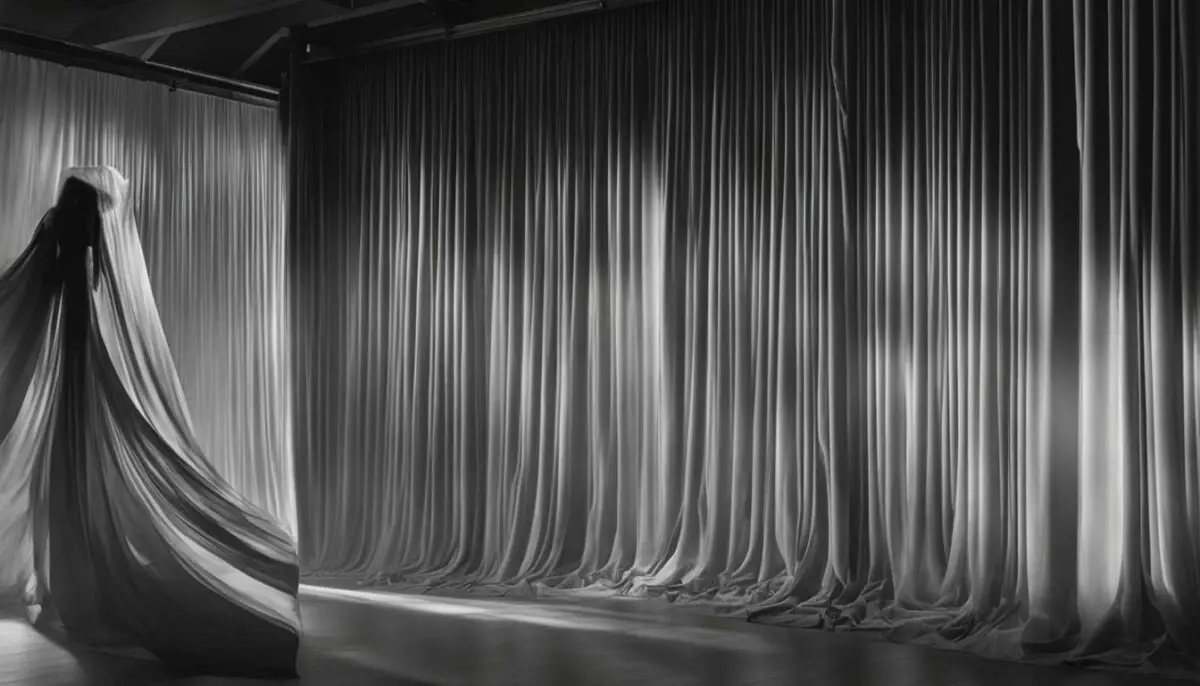
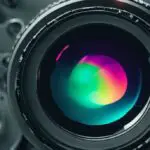


.jpg)


